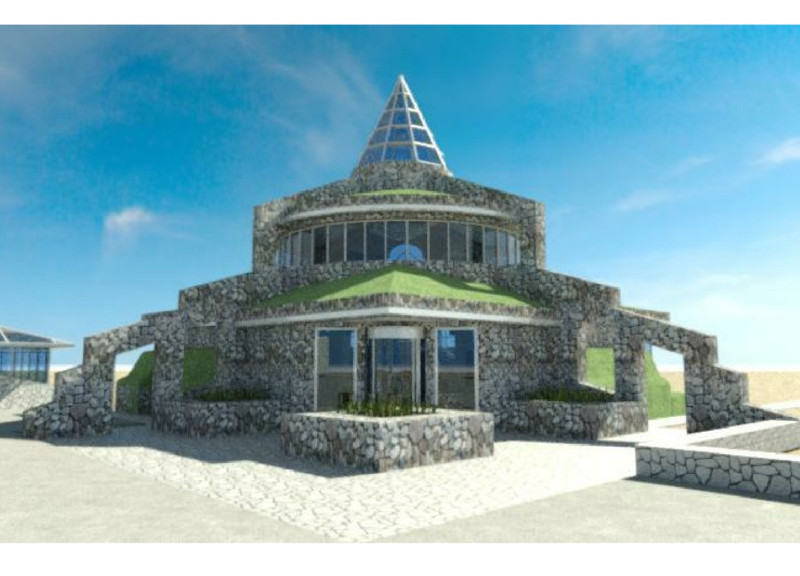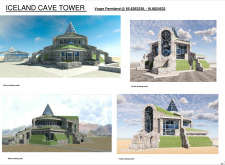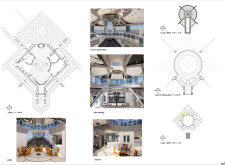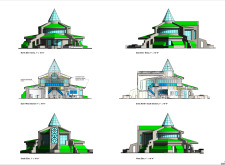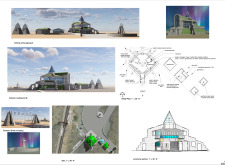5 key facts about this project
The building's architectural form is characterized by a pyramidal top that represents the volcanic landscape, while the layered stonework mirrors local cave systems. The integration of glass elements facilitates natural lighting and visual connection to the environment, ensuring panoramic views of the picturesque Icelandic scenery. The structure is designed with a focus on sustainability, utilizing local materials and advanced energy systems to minimize its ecological footprint.
Design and Material Choices
One of the most unique aspects of the Iceland Cave Tower is its careful selection of materials, which include natural stone, glass, reinforced concrete, grass, and metals. The use of natural stone provides structural resilience and aesthetic continuity with the surrounding geography. Large glass features enhance daylighting and views, while the green roofs contribute to insulation and biodiversity. Reinforced concrete elements ensure durability, and metal accents provide a modern touch to the overall design.
The interior layout promotes interaction and flow, with spiral pathways leading to observation levels that provide unobstructed views. This design encourages exploration and social engagement. The incorporation of geothermal heating and innovative water management systems illustrates a commitment to sustainable architecture, supporting local ecosystems and energy efficiency.
Functionality and Community Engagement
The Iceland Cave Tower serves as a multifunctional space that emphasizes community engagement. Key areas include a lobby for social interaction, observation areas for scenic views, and utility spaces designed with efficiency in mind. The architectural plan creates an inviting atmosphere that fosters gathering and learning. The exterior terraces offer opportunities for recreational activities and interaction with the natural environment, promoting a strong connection between the structure and its site.
Encouraging Sustainable Practices
This project stands out due to its attempts to balance modern architectural elements with traditional Icelandic cultural references. The design acknowledges environmental challenges while promoting sustainable practices, such as utilizing geothermal resources and implementing water recycling systems.
For a comprehensive understanding of the design and its intricacies, readers are encouraged to explore the project presentation, including architectural plans, architectural sections, and architectural designs. These elements provide deeper insights into the architectural ideas that shaped the Iceland Cave Tower and its integration into the unique Icelandic landscape.


